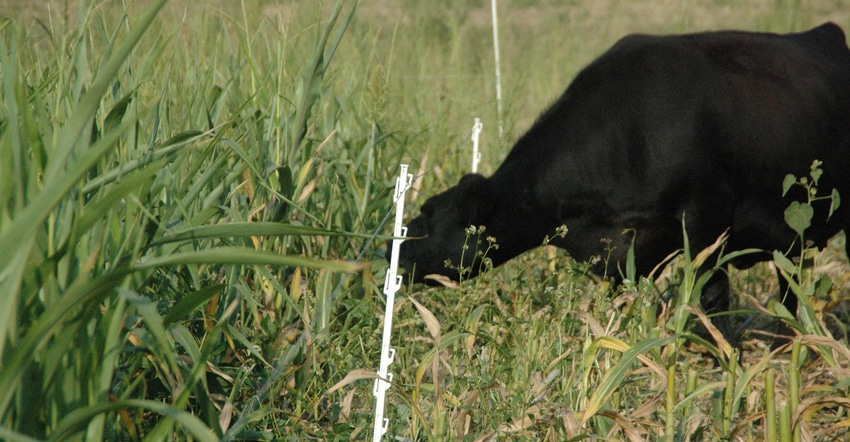September 30, 2021

For livestock producers, using animals to harvest cover crops rather than equipment has huge cost savings. With the right feed quality, they can also cut huge chunks out of the feed bill.
Feed costs tend to encompass up to 75% of a livestock operation’s feed budget. When using grazed forage, producers can save from 10% to 20% of that cost of production.
Nearly 20 years ago, Double J Jerseys of Monmouth, Ore., found 50% of its cost was devoted to feed.
“We’d taken an operating loan out to buy alfalfa for winter feed,” says Jon Bansen, owner of Double J Jerseys. “I knew that if we ever wanted to get out of debt and create the opportunity for the next generation to come back to a thriving business that things had to change.”
Foraging for feed
Working with Go Seed, an Oregon-based company that develops seed for turf, forage and cover crop markets, Bansen overhauled his forage production to maximize grazed feed.
While the sweet spot for making money is to have 50% of all feed consumed as grazed forage, Bansen pushed it even further to 90% of feed coming from grazed forage for six months of the season, and the early and later edges sitting at 60%.
To capture these savings, farmers must select the right varieties and grazing methods. For Bansen, this included establishing mixtures with upward of 10 different species with grasses, forbs, herbs and legumes, and putting cows on a 30-day rotation. Rather than grazing covers tight for increased forage quality, Bansen leaves 5 inches of covers to support soil health and lock in moisture.
As a result, the farm’s only purchased feed costs are a few loads of alfalfa each year and carrot pulp. The family uses carrot pulp to entice cows into the milking parlor.
“Cover crops can be a good way to provide extra forage on a farm,” says Rob Myers, director of the Center for Regenerative Agriculture at the University of Missouri. “If water and fencing are already available, grazing cover crops can provide a profitable return in the first year.”
Cover crops save time
From a time-resource point of view, how cover crops play into the farm’s calendar is another point of economic significance.
From a financial perspective, University of Missouri Extension economist Ray Massey finds people value time according to the time of the year. “If you’re not already doing that activity, particularly in the spring, it’s an additional cost because it’s not something you would normally do,” he says.
Massey says killing a cover crop is usually left to the busiest time of the year. “You will want to spend time on a preemergent or preplant application of an herbicide that isn’t in any way adding to your fieldwork activities.”
When cover crops are used to support a no-till system, extra time in the field can be alleviated.
The Natural Resources Conservation Service conducted a Conservation Effects Assessment Project to look at annual fuel savings comparing gallons of fuel used in conventional tillage practices to gallons used in conservation tillage practices, such as seasonal and continuous no-till.
In that project, the report found no-till conservation systems to have a significant reduction on fuel use. It also found farmers saved about 67 hours of work per eliminated pass when working a 1,000-acre field at 15 acres per hour.
Source: Go Seed, which is solely responsible for the information provided and is wholly owned by the source. Informa Business Media and all its subsidiaries are not responsible for any of the content contained in this information asset.
You May Also Like




